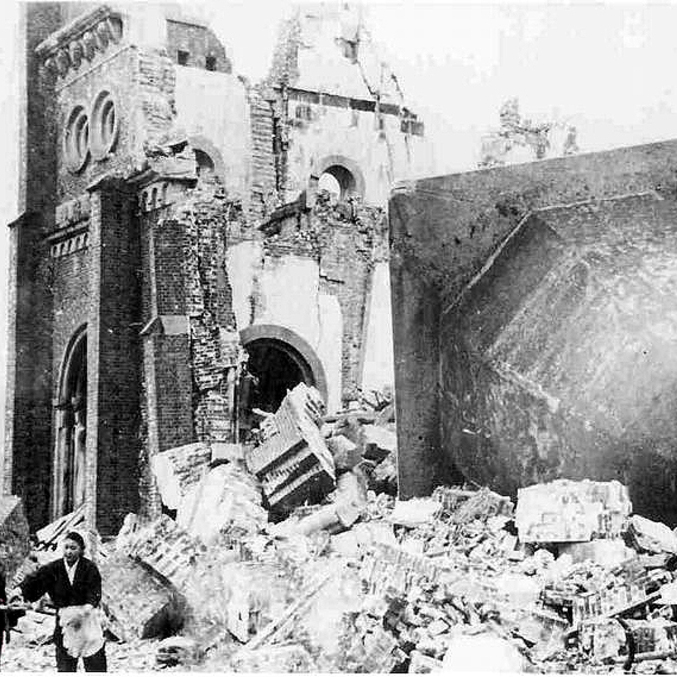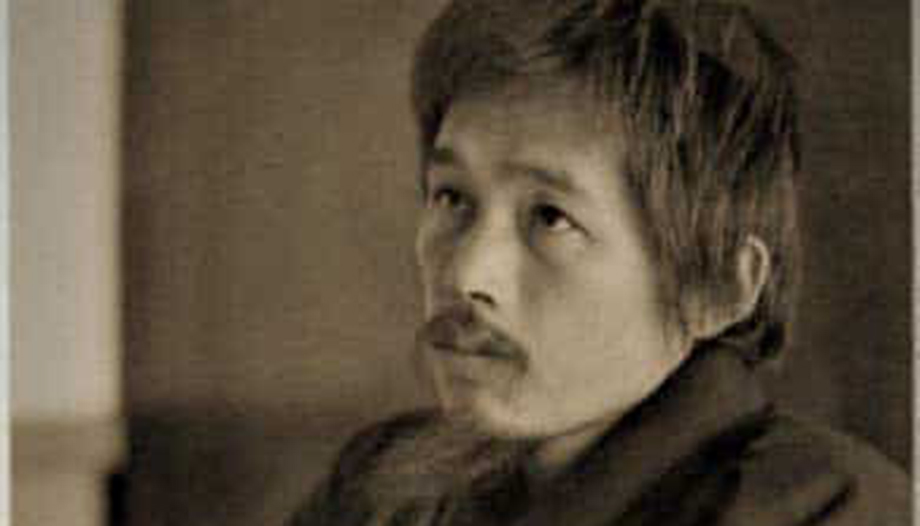One cannot speak of Christianity in Japan-as elsewhere in the world-without using the word "martyrdom," a term derived from the Greek μάρτυς, meaning "testimony."
The first persecutions
In 1587, Hideyoshi issued an edict ordering foreign missionaries to leave the country. The missionaries, for their part, continued to operate clandestinely. Ten years later, the persecution began. On February 5, 1597, 26 Christians (6 European Franciscans and 3 Jesuits, along with 17 Japanese Franciscan tertiaries), including St. Paul Miki, were crucified and burned alive in Nagasaki Square.
The Christian community in Japan suffered a second persecution in 1613.
During these years, the Japanese ruling elite delighted in experimenting with ever more cruel and original forms of torture and murder: Christians were crucified; burned over a slow fire; boiled alive in hot springs; sawed in half; hung upside down in a pit full of excrement, with a cut in the temple so that the blood could drain out and they would not die quickly.
The latter was a technique called tsurushi and was widely used, as it allowed the tortured to remain conscious until death or until they decided to renounce their faith by stepping on the fumie (icons with the image of Christ and the Virgin).
Prohibition of Christianity in Japan
In 1614, the Japanese shogun Tokugawa Yeyasu banned Christianity with a new edict and prevented Japanese Christians from practicing their religion. On May 14 of the same year, the last procession through the streets of Nagasaki took place, which toured seven of the eleven churches in the city, all of which were later demolished.
From then on, Christians continued to profess their faith in hiding: thus began the era of the kakure kirishitan (hidden Christians).
The policy of the shogun regime became increasingly repressive. With the outbreak of a popular uprising in Shimabara, near Nagasaki, between 1637 and 1638, involving mainly peasants and led by the Christian samurai Amakusa Shiro, the uprising itself was suppressed in blood and with weapons supplied by Dutch Protestants, who hated the Pope for reasons of faith and Catholics in general for mainly economic reasons (their intention was to wrest from the Portuguese and Spanish the possibility of trading with Japan in order to establish a monopoly regime).
The sakoku, closing of the country
In and around Shimabara, they massacred 40,000 Christians in the most horrible way. However, all Japanese, not only Christians, still remember their sacrifice and selflessness today.
In 1641, Shogun Tokugawa Yemitsu issued another decree, later known as sakoku (a term meaning the hermetic closure of the country), prohibiting any form of contact between Japanese and foreigners. For two and a half centuries, the only gateway to Japan for Dutch merchants remained the small island of Deshima, near Nagasaki, from which they could not leave.
However, the port of Nagasaki itself, as well as its surroundings and especially the islands in the bay, offered refuge to what remained of Christianity.
End of persecution in Japan
It was not until Good Friday 1865 that ten thousand of these kakure kirishitan, hidden Christians, left the villages where they professed their faith in secret, without priests and without Mass, and presented themselves before the astonished Bernard Petitjean, of the Societé des Missions Etrangères of Paris, who had arrived shortly before to be chaplain to the foreigners of the Church of the 26 Martyrs of Nagasaki (Oura).
They asked the priest, whom they called "padre" (a word that had been preserved in their religious lexicon for centuries) if they could attend mass.
Thanks to pressure from public opinion and Western governments, the new ruling imperial dynasty, the Meiji, put an end to the shogun era and, while maintaining Shinto as the state religion, on March 14, 1873 decreed the end of persecution and in 1888 recognized the right to religious freedom for all citizens. On June 15, 1891, the diocese of Nagasaki was canonically erected, and in 1927 Bishop Hayasaka became the first bishop of Japan, personally consecrated by Pius XI.
The nuclear holocaust in Japan
On August 9, 1945, at 11:02 a.m., a terrible nuclear explosion shook the sky over Nagasaki, just 500 meters above the city's cathedral, dedicated to the Assumption of the Virgin Mary. Eighty thousand people died on the spot and more than one hundred thousand were injured.
Urakami Cathedral, which owes its name to the neighborhood in which it stood, was and remains today, after its reconstruction, the symbol of a city martyred twice: by the religious persecutions of which thousands of people were victims, in odium fidei, over four centuries; and by the explosion of an infernal device that instantly incinerated many of its inhabitants, among them thousands of Christians, defined by their illustrious contemporary and fellow citizen, Dr. Takashi Pablo Nagai, as the "Lamb of Sacrifice immolated, to be the perfect offering on the altar, after all the sins committed by the nations of the Second World War".
Nagasaki was not the original target
Two interesting facts about this terrible event.


First of all, the United States did not need to drop a second nuclear bomb, since Japan's surrender was imminent, especially after another device had been detonated a few days earlier in Hiroshima, a device, however, of a different type (uranium-235) and in a territory with a different conformation. Therefore, it was intended to conduct another experiment to measure the effects of another bomb, this time of plutonium-239, in a topographically different territory.
Secondly, the launching of the new device was not to take place in Nagasaki, but in another city, called Kokura. However, in Kokura, the sky was cloudy, making it impossible to locate where the bomb was to be dropped. On the other hand, in Nagasaki, chosen as a reserve, the sun was shining, so the pilot chose to move to the new site and drop the A-bomb on the designated target in the city, namely an ammunition factory.
However, once the bomb was dropped, another unforeseen event occurred: the wind slightly deflected the trajectory of the device, blowing it up a few hundred meters above the Urakami district, just above the largest Catholic cathedral in East Asia, which at the time was full of worshippers praying for peace.
Some questions
Today, in the East, in Africa and in many other parts of the world, thousands of Christians continue to be persecuted, often killed, and sometimes at the very moment they beg God to save them from war, from the hand of their enemies, without ceasing to intercede for their persecutors and to forgive them. Is this not exactly the same thing that the one they are inspired by, Jesus Christ, did?
All this may make us wonder, perhaps, what is the true perspective, the gaze with which we should contemplate human history: evil for those who want and seek good and peace, and good for those who pursue evil? Death for his Son and his disciples and peaceful life for his persecutors? Is this really what God has always wanted?
These questions can be answered very well by Takashi Pablo Nagai, who not only did not identify as evil what may humanly seem one of the worst misfortunes in history, but even went so far as to thank God for the sacrifice of so many martyrs pulverized by the bomb, including his beloved wife Midori, of whom the Japanese doctor, himself seriously wounded and sick with leukemia, found in the rubble of their house the day after the bomb blast nothing but charred bones with the rosary chain by her side.
Takashi Pablo Nagai
Just as for Christ, for a martyr, a follower and a witness of Christ, the true meaning of life is to be an instrument in God's hands and, according to Nagai, those who died in the Nagasaki nuclear holocaust became an instrument of God to save vastly more lives, as he himself stated during a memorial ceremony for the victims near the ruins of the cathedral:
"We ask ourselves: was the convergence of such events, the end of the war and the celebration of the feast of the Assumption of Mary into Heaven, pure chance or a providential sign? I heard that the atomic bomb was destined for another city. The dense clouds made that target too difficult and the pilots aimed at the alternate target, Nagasaki. There was also a technical problem, so they dropped the bomb much farther north than planned and thus it detonated right over the cathedral. It was certainly not the US plane crew that chose our neighborhood.
I believe it was God, His providence, who chose Urakami and brought the bomb right on our homes. Isn't there a deep connection between the annihilation of Nagasaki and the end of the war? Wasn't Nagasaki the chosen victim, the sacrificial lamb slain, to be the perfect offering on the altar after all the sins committed by the nations during World War II?
Our Church of Nagasaki kept the faith during hundreds of years of persecution, when our religion was outlawed and the blood of the martyrs flowed copiously. During the war, this same Church never ceased to pray, day and night, for a lasting peace. Was this not the spotless lamb to be offered on the altar of God? Thanks to the sacrifice of this lamb, several millions of people were saved who would otherwise have been victims of the ravages of war".
Conclusions
This should also be our vision, the only possible vision of history, and the only perspective of life, for a Christian and for a "martyr", witness of Christ:
"Unless a grain of wheat falls into the ground and dies, it remains alone; but if it dies, it bears much fruit. He who loves his life loses it, and he who hates his life in this world will keep it for eternal life" (Jn 12:22-24).
Writer, historian and expert on Middle Eastern history, politics and culture.













